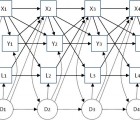Objective: Huntington’s disease (HD) is characterized by motor symptoms, psychiatric symptoms and cognitive impairment in, inter alia, executive functions and social cognition. The aim of this study was to investigate the relationship between subjective feeling of psychological distress using a self-report questionnaire and performances on tests of executive functions and social cognition in a large consecutive cohort of HD patients.
Method: 50 manifest HD patients were tested in social cognition and executive functions and each answered a self-report questionnaire about current status of perceived psychological distress (the Symptom Checklist-90-Revised (SCL-90-R)). Correlation analyses of test performance and SCL-90-R scores were made as well as stepwise linear regression analyses with the SCL-90-R GSI score and test performances as dependent variables.
Results: We found that less psychological distress was significantly associated with worse performances on social cognitive tests (mean absolute correlation .34) and that there were no significant correlations between perceived psychological distress and performance on tests of executive functions. The correlations between perceived psychological distress and performance on social cognitive tests remained significant after controlling for age, Unified Huntington’s Disease Rating Scale-99 total motor score and performance on tests of executive functions.
Conclusions: Based on previous findings that insight and apathy are closely connected and may be mediated by overlapping neuroanatomical networks involving the prefrontal cortex and frontostriatal circuits, we speculate that apathy/and or impaired insight may offer an explanation for the correlation between self-report of psychological distress and performance on social cognitive tests in this study.

